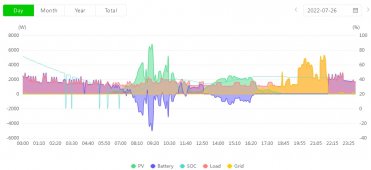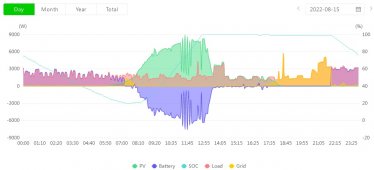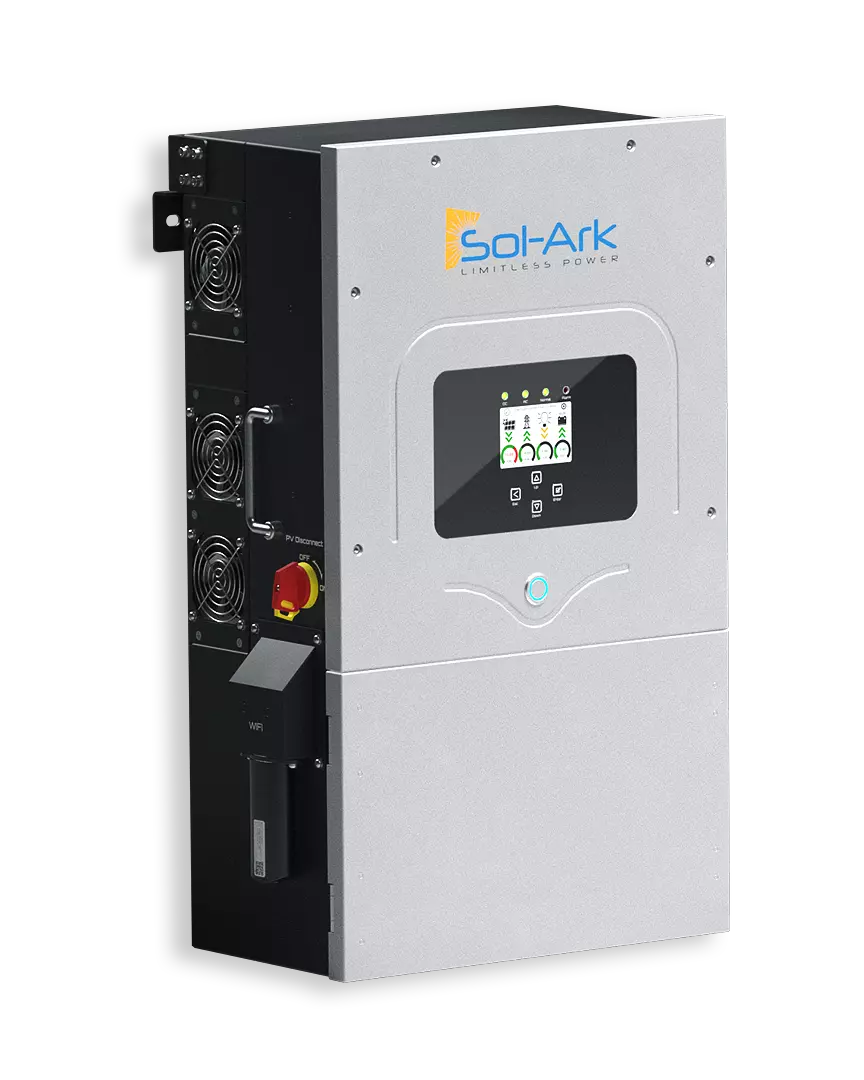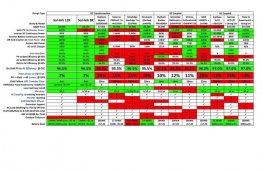From 17:45-22:00 are you using grid power for your loads on a typical day?
From 5pm to 10pm I am on the Grid and whatever PV is left. PV on a good day will power the house until 6pm.
Why didn’t the batteries start slowly adding to the pv power when there started to not be enough pv power to fully supply the load and then battery would fully cover the load once pv power was no longer available at all? Do you have the battery set to only come on at a certain time?
Exactly. I set the TOU to use Zero battery power after 5pm. The reason is that the most annoying power outages we get are at like 1am or later.
I have a Salt Water Aquarium and have to get up and start the Generator then check to see that everything is fine in the Aquarium.
With a 10pm until Daylight setting I know that when I go to bed I will not be disturbed.
A KWh is a KWh so it doesn't matter when I use the Batteries. If I get one more pack then I will change Grid usage to 5pm until 8pm.
if so the 96.5% efficiency doesn’t matter that you were getting earlier because you were using grid power later.
I have to use Grid power at some point because the I am short about 10KWh of batteries for 24 hour Operation.
Not sure I follow, how does this effect or change the 96.5% efficiency I was getting for 10 hours of day.
When your battery is taking over randomly from 11am-1pm what is happening? Is your inverter going into offgrid mode? Or is it adding battery power to whatever pv power is available?
Yes, if clouds pass over and PV power cannot cover the load and I have told it that it is OK to use the Battery up to 3KW Max and it will combine the two. Those little peaks you see are probably because the Wife is using the clothes dryer and clouds are passing over.
If it’s using battery power I’d want it to stay on grid tie mode (not offgrid mode) so that surges (that cost basically nothing from the grid) are handled by the grid and not by the batteries and the inverter because surges are hard on inverters and batteries shortening their life.. I suppose your not using Cts on your homes mains wires to prevent the battery from being discharged into the grid so your inverter is most likely going into offgrid mode when the batteries are used..
The Inverter never goes into off grid mode! It can use the PV, Batteries and the Grid simultaneously to power the Load.
Yes I have CT's on the Mains. If I tell it only to use a Max of 3KW from the Batteries between 1pm and 5pm and PV is producing 6KW and then suddenly 14KW is needed by the Load it will draw the extra 5KW from the Grid.
So yeah with my system I only have 5660w of solar so that wouldn’t fully cover all of my loads all the time so I need the battery their to add to the grid tie inverter/pv powers output.. but as soon as there’s not enough pv the battery starts adding on to available pv so that I don’t use grid power at all 24/7 unless of course it’s summer time and there a really high air conditioning need.
I could set mine like that but I honestly just want the piece of mind that knowing when I put my head on the Pillow that nothing is going to disturb my sleep. In order to achieve that with 26KWh of batteries I had to set the TOU this way to make it happen.
I guess I’m asking all these questions because I’m trying to figure out if the efficiency you describe from SolArk is actually due to the way the SolArk “manages power” or if it’s due to the way you use the SolArk in your situation.
It's the way it manages power. It's converting high voltage DC to high voltage AC directly.
There’s cloudy times where my 5.66kw array can only give me like 250w so the battery would always need to be adding to pv power when in grid tie mode to keep the grid from powering my loads so I’m not paying for power.. I suppose if anyone had a large enough array they could basically always supply the homes loads directly from pv (pv to inverter to get the high percentage efficiency you speak of) But even with an array double the size of mine (11kw) there would be many cloudy times when I would only get roughly 500w and the battery would be needed and also many times when my homes loads are over whatever’s available from the pv array.
So yeah maybe your what I’d call oversized array can most of the time supply all your loads via pv to inverter to be able to utilize the 96.5% efficiency but you had to spend the extra money up front to have an array that large to do that and even on a typical day you are still using grid power from what I can see on your graphs.
Very little to no Grid Power on a typical day. Here is the same typical day I posted above just Showing Grid Usage only.
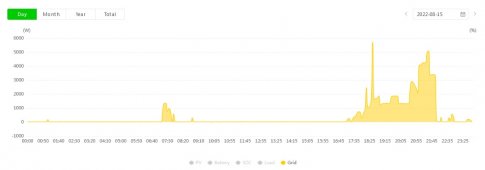
I’m wondering if using the Cts/zero export/grid zero (also allowing grid to handle surges) and having the battery always available and helping pv and having a smaller array would still have the 96.5% efficiency or would the battery constantly helping the pv input make the efficiency go down closer to the Schneider.
On a Typical day the battery only pops in and out for maybe 30 minutes in total and the amount of assistance is not typically all that high.
I would classify it as having a Trivial impact on efficiency.
Even if the efficiency was lower when using the SolArk to stay in grid tie mode with Cts and battery (not switching to offgrid mode), with battery helping pv to supply load, the efficiency loss is made up by not needing to purchase such a large array and the less wear and tear on the batteries/inverter due to the grid supplying the surges. Also the efficiency loss would be made up by not needing such a large battery bank to cover the surges. If the SolArk only gets 93% when it’s in grid tie/ct with battery assist mode and the Schneider gets 89% then that 4ish% loss is acceptable imo to have a low frequency most of the time meaning better made inverter..
Last time I worked out the math on one of my average days it was not 93% but 96%. That would be a 7.5% advantage which is pretty big.
Keep in mind that a Sol-Ark 15K is not all that much more expensive than the 12K. So if you have doubts just spend the extra $1500.
For a comparison a Schneider 100A SCC is $1100. And the 15K has 275A SCC. So that alone can easily justify spending the extra money.
But anyways good chat, there’s lots of ways to look at it. My typing (without actually hearing the emotion with the words) sometimes sounds like I’m being an a** or trying to prove you wrong but I’m not, just trying to have a chat and learn. I’d like to see a diagram showing the power flow inside the SolArk showing the lack of a “double conversion” in all modes of operation and compare that to the Schneider.
I did not take any offense, I always see you as a guy like me who is trying to learn more about what is out there. I also like to follow threads on other equipment so that I learn stuff.



